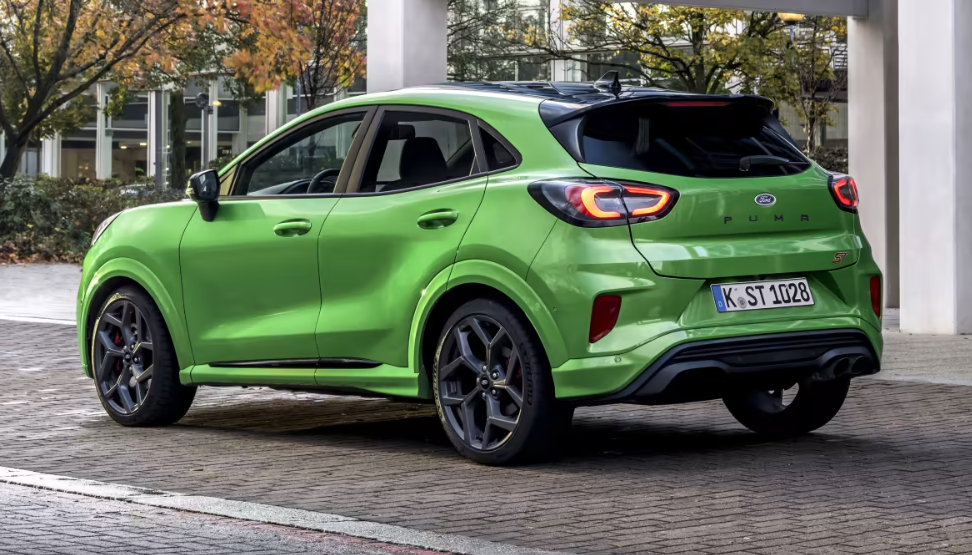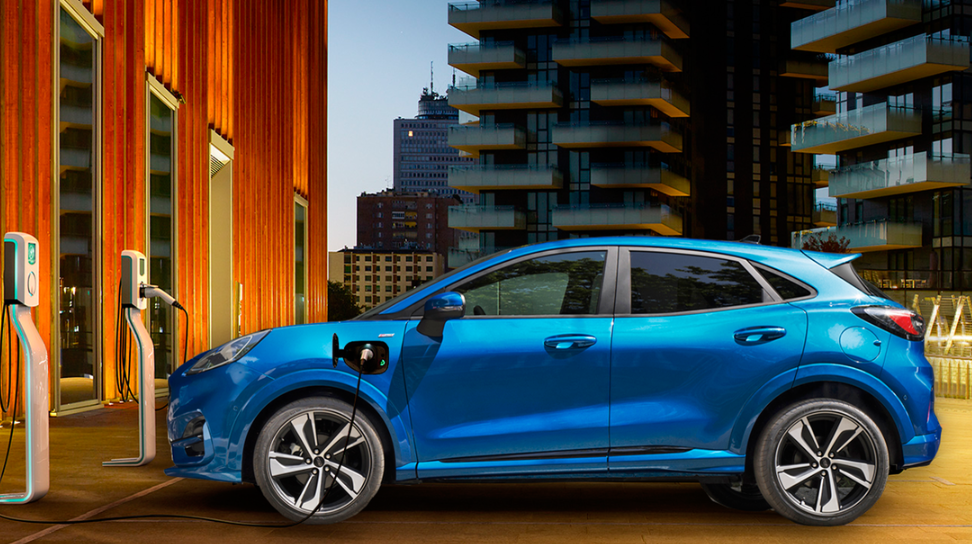Ford revealed new details regarding its European electrification strategy in March 2022 and confirmed the launch of Ford Puma Electric. The Ford Puma EV is the Blue Oval’s smallest and most compact electric SUV. The Ford E-Transit, which arrived in Europe in this year’s 2021 after the Ford Mustang Mach-E, was launched in 2021. Ford announced seven additional electric vehicle launches in a March 14th, 2022 announcement. Ford plans to launch all seven new EVs in Europe before 2024.

Three of the seven future Ford electric vehicles will be passenger-oriented models. The rest will be commercial vehicles. It will be a five-seat, medium-sized crossover and will go into production at Ford’s Cologne plant (Germany), by the end of 2023. Another “sports crossover” will be built in Cologne, a derivative of VW ID.5. In 2024, the Ford Puma Electric, a derivative of the VW ID.5, will be available. On March 21, 2023, the Ford electric SUV will be debuting on the MEB platform alongside the VW ID.4. Ford could share additional information about the Puma Electric or other future EVs during the event.
Ford released a video on October 26, 2022, confirming that the Fiesta was being scrapped. The company stated that the Fiesta story was over, but a new one was beginning. A Puma emerges from a garage silently, emitting a loud whirring sound, and a wall box is seen inside. Although the teased Puma sounds a lot like an electric vehicle, it looks exactly like the gas-powered Puma ST-Line.
2024 Ford Puma Electric Specs
Ford has not yet revealed the specs of the Ford Puma Electric. However, it has confirmed a 500km (311 miles), range for the larger (medium-sized EV) that will be available on March 21, 2023. The Puma EV could have a WLTP range of over 450km (280 miles), which would be comparable to the Opel Mokka-e and Peugeot e-2008.
Auto Express reports that the Ford Puma Electric won’t ride on Volkswagen’s MEB platform or Ford’s bespoke EV architecture. Instead, it will use an adaption of Ford’s global B platform (current architecture for combustion variants) and borrow elements/modules from Ford’s electric vans. The company plans to build the electric version of the Transit Courier or Tourneo Courier vans alongside it. The electric vans will also be in production by 2023.

LFP cells could be used in the Ford Puma Electric Vehicle’s battery packs. Ford has confirmed plans to use LFP-made battery packs from CATL with cell-to-pack technology for the Mustang Mach-E, F-150 Lightning. By May 2023, the company will begin selling LFP batteries in the Mustang Mach-E. The Mustang Mach-E will be available in Europe with the low-cost option later in 2023. In early 2024, the electric pickup truck will get an LFP battery pack.
Iron-based cells are safer and cheaper than NMC cells. They also last longer. The SUV’s urban-focused design would make it a good choice for customers. While their range and weight may not be the best in class, they are still affordable. Ford CEO Jim Farley stated that LFP cells are being developed by Ford and that it sees them as a huge opportunity. This will enable Ford to quickly introduce its EVs to the market.
Infotainment Systems
Ford SYNC 4A will be featured on the Ford Puma Electric, which is its cloud-based infotainment platform. It is already available in the Ford Mustang Mach-E and Ford Expedition as well as the Ford Edge and Ford F-150 Lightning, which are all U.S. models. It is an upgrade to the Ford SYNC 4 in-car entertainment and communication system, which includes a few new features.
SYNC 4A uses interactive individual digital cards, called “Adaptive Dash Cards”, instead of traditional menus. You can scroll through the cards and interact with them by selecting from a personalized set of digital cards that you use most often or recently. The new system uses cloud connectivity to provide more sophisticated route planning and voice recognition systems that are human-like. It can also have conversations with the user. The updated system is twice as powerful and has twice the processing speed.
2024 Ford Puma Electric Production
From 2024, the Ford Puma Electric production will be in Craiova, Romania. In the second half, the pure electric version of Ford’s most-sold passenger vehicle in Europe will be available for sale. Ford Otosan was a joint venture of Ford Motor Company (and Turkey’s Koc Holding) that owned the Craiova plant. The Ford Puma Electric was confirmed by the Blue Oval. Ford Otosan became the sole owner of Craiova’s manufacturing plant. Ford will transfer the Romanian plant to the Turkish owners for EUR 575 million (613 million USD).

Ford intends to produce the batteries for its upcoming EVs in Europe, to make them affordable. Ford plans to create a tripartite joint venture with SK On Co. Ltd., Koc Holding, and Koc Holding to set up an EV battery manufacturing plant in Turkey. The joint venture plant, located near Ankara will produce high-Nickel NMC cells from the middle of the decade. It is expected that the factory will produce 30-45 GWh annually.
Ford anticipates selling more than 600,000. EVs each year in Europe by 2026. Ford Cologne Electrification Centre will produce 1.2 million EVs over six years. The company will transform the Cologne factory into an EV plant with a USD 2B investment. It expects to begin producing passenger EVs at this transformed facility in the latter part of 2023. Ford announced on June 22, 2022, that it would build EVs using its next-generation EV architecture in Valencia (Spain). However, it has yet to approve products built on the Spanish production site’s new architecture. According to the Blue Oval, this architecture is “a crucial step” in Europe’s transition to electric vehicles.
Ford’s goal for Europe is to completely switch to electric vehicles by 2030. The company aims to double its annual production of electric vehicles to over 2 million EVs, or about one-third of its current volume by 2026, and to convert half of its volume into EVs by 2030.